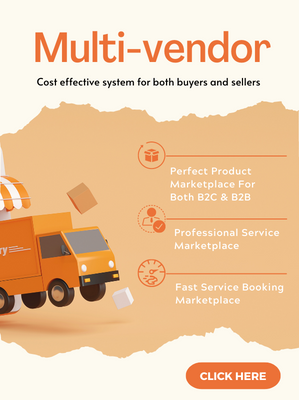Your cart is currently empty!
Digital transformation: Definition, benefits for your business and example in real life
Digital Transformation has become a hot buzzword in the business world. Influencers describe the benefits and how organizations that don’t transform digitally will be left behind and outstripped by competitors. In this article, we explore the definition, the benefits of digital transformation to a business, and examples by industry in real life.
Digital transformation is the process of using digital technologies to create new — or modify existing — business processes, culture, and customer experiences to meet changing business and market requirements. This reimagining of business in the digital age is digital transformation

Examples of Real-Life Digital Transformation by Industry
Banking / Financial Services:
Think about the example of a traditional bank moving to online-only or online-focused. They can offer a reduced cost for customers in multiple areas with self-service banking, mortgage applications, and self-directed investment options. While they free up the time for their financial advisors to meet and actually advise people rather than filling out paperwork, and processing, and requests. And other tasks that can be automated or self-directed. For instance,financial services loyalty program can help with that.
Insurance:
Insurance companies often run on older, manual processes for filing, assessing, and approving claims. These organizations can leverage modern technology to streamline processes and offer better customer service. They can do this via self-service portals for support and tracking claims. They can also allow customers to submit claims via mobile app, automated approvals and checks, and integrate with other systems. Basically, analyzing where there are manual touchpoints in their current workflows and sees what can be automated or digitized to reduce the work required and get claims processed faster.
Manufacturing:
Digital transformation in manufacturing can include integrating IoT sensors and devices for real-time tracking of manufacturing, automating manual processes such as inventory control and re-stocking.. And it use data analytics to identify inefficiencies in the supply chain for further enhancements.
Agribusiness:
Agriculture businesses are taking advantage of all sorts of new digital tools to enhance their output and improve processes. This includes precision agriculture technology. They can revolutionize how crops are monitored, IoT and sensors in fields, drones, and advanced robotics to improve productivity. Moreover, it reduces the time required for spraying and other tasks.
Non-Profit:
Digital technology can facilitate member renewals. It also provides a more intuitive platform for launching fundraising campaigns. It can provide a huge ongoing organizational benefit to non-profits that often have tight annual operating budgets.
These are just a handful of examples to demonstrate. The wide-ranging effect digital transfromation technologies working together can have on different types of businesses. Of course, not all organizations will be able to leverage digital tools the same way. But there is a pattern of typical benefits businesses can unlock. by using digital technology to revamp processes and provide more value to customers and staff.
Advantages of Digital Transformation
Eliminating Time-Consuming Manual Processes via Business Process Automation
One of the major advantages of digital transformation is eliminating tasks. These tasks unnecessarily waste staff time. By implementing digital technology, you can use software to perform the tasks that were previously performed manually by staff. Business Process Automation is often seen as the stepping stone to a more holistic digital transformation but it can also be one of the outcomes.
Some key areas of digital technology can be used to reduce manual labor:
- Customer data collection
- Email and push notifications based on triggers
- Account changes
- Update to services
- Status updates
- Procurement
- Tech support ticket creation
- Invoicing
- Time tracking
- Payroll
The true value coming from connecting these tools is to be able to work together. It leads to streamline processes for high-volume repeatable tasks, with greater accuracy. And it reduced costs as there is less of a need for staff to get involved.
Increasing Customer Satisfaction via Improved Customer Experience
Automating these tasks also improves customer and staff experiences. As they’ll see much faster turnaround times when they have an inquiry. One of the advantages of digital transformation is enabling customers to access your services and support via their preferred method of interaction.
By leveraging digital tools, you can enable omnichannel support. Moreover, it allows customers to reach out via phone, website live chat, email, mobile app, or through a support forum. By keeping it all digital, companies can provide multiple touch points, track interactions, and facilitate follow-ups and feedback gathering from customers.
Similarly, organizations can use digital tools and processes to make it easier for customers to gain access to their services via e-commerce, mobile platforms, social media, and other digital avenues. Not only do customers get the benefit of accessing services via their preferred channel. But businesses can also suggest other related offers, products, or services using the data attached to their accounts.
These are processes built and refined once in a business is managing these aspects through digital technology. It also can be refined based on your actual customers’ experience
Improved & Efficient Decision-Making Through Real-Time Data Collection
Software-focused, digital processes open up a level of visibility into what is working well and what can be improved. With all data being housed digitally, often in real-time, it makes recognizing patterns and identifying opportunities for enhancements much easier.
Central data repositories can be mined to gain insights on where there are bottlenecks in workflows. These issues resurface the most, employee performance, customer preferences and behaviour, etc. Once a business is using digital tools and develops processes around them, they are much easier to produce reports on and pinpoint areas for improvement as opposed to traditional surveying, sampling, and manual feedback collection.
Companies also drive efficiencies in their supply chain by integrating digital tools at each stage of development to service or product delivery. This can be as simple as tweaking existing processes to include a digital checkpoint or as advanced as automating processes and monitoring the output at each stage via IoT devices.More data typically leads to faster, more accurate decision-making.
You Might Also Be Interested In…
Integrated marketing: The importances and unique tips to create successful campaigns
Affiliate marketing: The powerful way to increase the revenue for ecommerce sites
Increased Flexibility and Scalability
A major advantage of digital transformation is breaking free of restrictive legacy systems and leveraging modern, scalable alternatives. Existing processes in businesses are often based on old technology. which requires manual input – creating bottlenecks when workloads spike. Some manual processes simply won’t scale. As more and more employees need to process claims, service requests, provide support, or complete other business functions.
Modern software and processes are often easier to integrate. So you can connect various parts of your business. When a task is complete, modern systems can often connect the data. Or connect with the next item to push it forward to where it needs to go. It goes without manual intervention.
Transforming businesses with digital transformation to operate digitally, also allows those organizations to remain nimble. It be more responsive to innovations and trends in their market.
Enhanced Reliability and Reduced Risk
As organizations continue to grow, the technology and processes that they’ve relied on for your years can start to fail them.
From a technical standpoint, it can be harder to back up, maintain, and protect data within older systems. This can make them more prone to failure or an easier target for cybercriminals.
In the McKinsey report, Digital risk: Transforming risk management for the 2020s, they claim: “improving the efficiency and effectiveness of current risk-management approaches, digital risk initiatives can reduce operating costs for risk activities by 20 to 30 percent.”
When hiring, if your existing business processes and operations are based around legacy technology, it can be difficult to find professionals with the right skillsets to maintain them. By upgrading to modern digital tools to digital transformation, you’ll have a larger pool of applicants with the right experience to be able to support them properly.
Keep Your Business Objectives In Mind
Now, the benefits of digital transformation listed above (automating repeatable tasks, increasing customer experience/satisfaction, driving efficiencies, flexibility, and reduced risk) are all things most businesses want to achieve. It’s important to keep your specific business and objectives in mind.
Level up your website with Magesolution – the official partner of Magento
Our own Magento development support services is plus the option for monthly support packages. It is to make sure your online business always remains in top form. And of course, there are countless other developer websites that can be easily found and perused as well.



